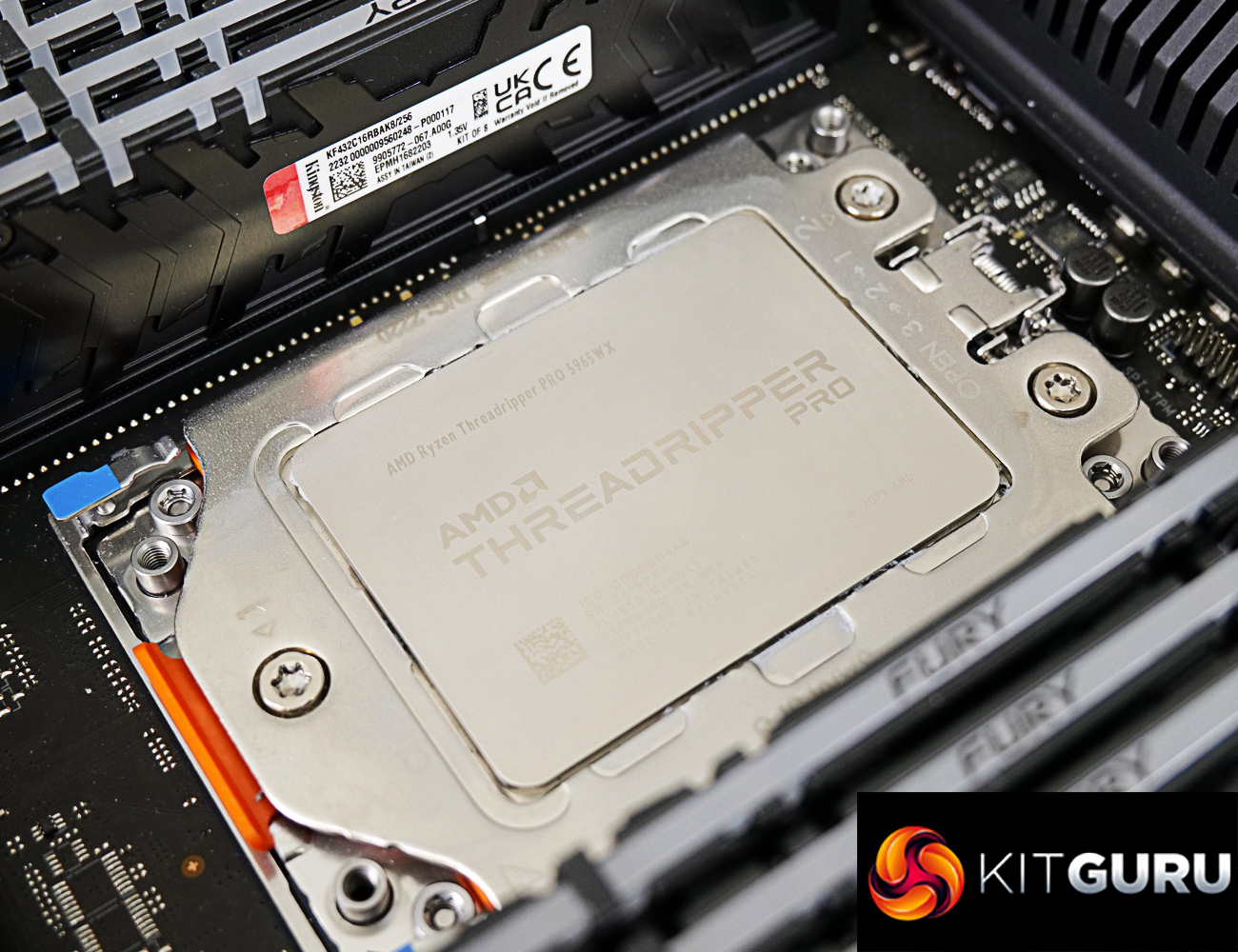AMD’s Threadripper Pro 5000 WX-Series CPUs are super expensive, workstation-grade processors that undoubtedly appeal to a niche target market. But they’re also outstandingly-well though out products that tick many, many boxes and sit in a tier of their own.
At £7,000 the Ryzen Threadripper Pro 5995WX is a true flagship processor. Its 64 cores are fast and efficient, and 256MB of L3 cache is simply ludicrous.
Of course, the pricing is utterly insane to those of us who deal with the consumer desktop market on a day-to-day basis. But if this workstation-orientated 64-core chip allows your skilled video editor, or animator, or simulation engineer to complete value-added work tasks quicker, then it can potentially be justifiable.
If I am a design engineer who can use the Threadripper Pro 5995WX to run 10 simulations instead of 5 before I have to hit my allocated slot on a million dollar additive manufacturing machine. That can have value easily to the tune of tens of thousands of dollars in just a few weeks. And from that perspective, the horsepower on tap is a clearly positive business decision.
The reality, however, is that the 64-core chip is nice, but it isn’t always justifiable. I remember speaking to one of AMD’s team who said that the 64-core actually does very well with customers in the domain of rendering and animation, because those workloads often scale very well.
But for my own video editing workloads, as an example, having the option to choose a 32-core chip for half the price is valuable.
The other key factor with this line-up is the 24-core model. While you aren’t necessarily going to be getting performance that is much better than the sub-£700, 16-core Ryzen 9 7950X, you are getting access to the superb Threadripper Pro WRX80 platform.
I recall dealing with multi-physics simulation workloads in previous years. Often, the software wouldn’t really scale with more than 16 CPU threads, because the licensing made it expensive to do so or because that’s how VMs were often carved up. Some of the software would, however, take as much GPU compute horsepower as you could throw at it.
This is a perfect example of where a 16- or 24-core CPU with 128 lanes of PCIe Gen 4 connectivity and eight-channel memory support can be useful.
I’ve openly proclaimed my love for the Threadripper and Threadripper Pro platform many times in the past. I like the scalability up to 64 cores. I like the fact that all chips get the same – excellent – memory capability and PCIe connectivity. And I like that there’s an element of control and tinkering ability given to those users who want that.
There are also some areas that I think could do with improvement.
The 280W consistent TDP is handy for system integration, no doubt, but it feels wasteful on a 24-core chip that is clearly operating way outside of its efficiency range. Of course, there is frequency adjusting ability but this is not always available on the workstation-geared motherboard, like our ASUS sample.
There’s no real value in me sitting here and giving these uber expensive chips are rating or review score, as this was more of a mini-review or showcase. Plus, individual use cases and workloads for this type of hardware will vary so much.
But hopefully this has been an interesting piece highlighting what sort of power Threadripper Pro can offer versus mainstream parts and where they fit into the market segment that us mainstream-focussed enthusiasts don’t really deal with on a day-to-day basis.
Discuss on our Facebook page HERE.
KitGuru says: AMD's Ryzen Threadripper Pro 5000 WX-Series processors on the WRX80 platform are performance powerhouses. If you need this level of compute and connectivity, you know that you need this level of compute an connectivity.
 KitGuru KitGuru.net – Tech News | Hardware News | Hardware Reviews | IOS | Mobile | Gaming | Graphics Cards
KitGuru KitGuru.net – Tech News | Hardware News | Hardware Reviews | IOS | Mobile | Gaming | Graphics Cards



